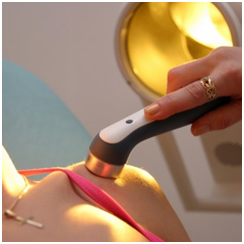How To Manage Neck And Shoulder Pain?
Introduction
We usually take having a pain-free neck and shoulders for granted until something bad happens. It’s like our youth-we don’t truly appreciate it until it’s gone. Pain in the neck and shoulders can be due to a variety of reasons and even inadvertently due to wear and tear from our day-to-day actions like sleeping, house chores, or work. Hence, neck and shoulder pain is a frequent excuse in Singapore for seeing a neck and shoulders specialist. Research shows that approximately 10 percent of adults have neck and shoulders pain at any one time in their life.
The anatomy of the neck is very complex. It’s a combination of relatively small structure of bones called ‘vertebrae’, nerves, muscles, ligaments, and tendons. It’s the delicate area housing the spinal cord and the major nerves arising from it that sends messages from the brain to control all parts of the body. It also supports the head and controls its movements.
Your shoulder is a ‘ball and socket’ type of joint with a large range of movements. It is primarily made up of 3 bones:
- Humerus: or the upper arm bone
- Scapula: or the shoulder blade
- Clavicle: or the collarbone

What Causes Neck And Shoulders Pain?
Neck and shoulders pain is usually caused by mechanical wear and tear, like for example from consistent poor posture, whether it’s leaning over your computer or hunching over your workbench for long periods of time. Sports-related trauma, injury, overuse, overexertion and age are also common causes of pain in these joints.
Causes Of Neck Pain Include:
➢ Trauma
➢ Infections
➢ Poor posture
➢ Degenerative diseases like Cervical Spondolysis
➢ Tumors
➢ Muscle strain
Causes Of Shoulder Pain Include:
➢ Muscle strains
➢ Tendonitis or Bursitis
➢ Dislocation
➢ Trauma causing fractures or Rotator cuff tears
➢ Frozen shoulder
➢ Pinched nerves or Radiculopathy due to Cervical herniated disc
➢ Shoulder Osteoarthritis
How Are Neck And Shoulder Pain Diagnosed?
Apart from pain, there can be other symptoms of soreness, stiffness, headaches, muscle spasms, or tingling and numbness. Neck and shoulder pain is usually diagnosed after an elaborate history and physical examination. Imaging like X-rays, MRI and CT scans are frequently used. Some tests to check the muscles and nerves such as electromyography (EMG) are also sometimes used to aid in making a diagnosis.
How Is Neck And Shoulders Pain Managed?
There are many neck specialist in Singapore who deal with these issues daily. Before moving on to the treatment, the pain specialist will try to find the underlying cause of the pain. After making a diagnosis, the treatment options include:
➢ Medications: for pain relief like Paracetamol (Panadol) Acetaminophen (Tylenol) or nonsteroidal anti-inflammatory medication (NSAID) such as Ibuprofen or Naproxen may help relieve mild to moderate neck and shoulder pain. Muscle relaxants can also be used.
➢ Physiotherapy: includes gentle exercises which does not let the joints ‘stiffen up’. Stretching and strengthening exercises like neck rotation, neck tilting, neck bending, shoulder rolls, shoulder retractions help restore and preserve the range of motion. These exercises should be repeated several times a day. Massages, traction, spinal manipulation, movement-based therapy, acupuncture may also accompany.
➢ Ice and heat: For acute injuries ice is recommended as the initial treatment, especially if swelling is present. Heat can also help to reduce neck and shoulder pain. Moist heat with a shower, hot bath, or moist towel warmed in a microwave are usually beneficial.
➢ Posture: A good posture may help a lot. Make sure that the sitting position at work or at the computer is not poor and the back should be upright. Apply positions that emphasize a neutral neck position and minimize tension across the supporting shoulder and back muscles.
➢ Injections: Sometimes the specialist for neck and shoulder pain may suggest injecting medication called Corticosteroid directly into the joint. Trigger point injections are local anesthetic medication (Lidocaine) that are injected into the muscles at specific areas of tenderness and pain.
➢ Psychological and mind-body therapies: Some patients with chronic neck and shoulder pain may benefit from cognitive behavioral therapy (CBT). CBT involves learning about the condition and learning how to develop a more positive way of thinking and ways of relaxing, coping with stress which eventually helps manage the pain.
➢ Surgery: Is often the last resort mostly done for severe conditions like Cervical Radiculopathy or Cervical disc herniation.
When Should I See A Doctor?
If you suffer from neck or shoulder pain, it is very easy and recommended to find a neck or shoulder pain specialist in Singapore. They usually try non-invasive methods of treatment and try to avoid medications and surgeries. Furthermore, they can promptly diagnose the problem and advise you accordingly making sure the problem doesn’t escalate. Emergency situations like motor vehicle accidents and falls obviously require immediate attention and care.
Other situations where it is important to consult a neck specialist in Singapore include when the pain is severe enough to wake you up from sleep, persists for several days without relief, or spreads to other parts of bodies like the shoulders and arms and is accompanied by headache, numbness, weakness or tingling.
What To Expect When I Visit The Pain Relief Clinic
A typical visit will involve our doctor first understanding your medical history, concerns and previous experience with other pain treatments.
For patients who have consulted many people but have yet to receive a clear diagnosis, selecting an affordable imaging scan might be recommended to confirm the cause of your pain..
Some patients have already done scans with other doctors for their pain condition but are still not clearly told what they suffer from.
Dr Terence Tan is happy to offer you a second opinion and recommend how best to manage your condition.
We also see patients who already have a confirmed diagnosis from specialist pain doctors, but are "stuck” because treatment options offered are not practical or acceptable.
We can help by discussing options that you might have potentially never been told of.
A common experience is when a patient has already consulted a specialist doctor for pain management and is told to consider orthopaedic surgery which they find too aggressive.
Or they may have seen doctors for their pain and were prescribed painkillers with potential side effects which made them feel uncomfortable.
Many of our patients have also first tried complementary treatments or acupuncture with traditional Chinese pain doctors.
They look for a second opinion after finding any relief experienced from other treatments to be temporary or requiring repetitive treatments, which add up to time and cost.
Especially in such situations, we emphasize using non-invasive medical technology you likely have not been told about .
This can make a big difference to your results.



 Click For Live Back Pain Workshop
Click For Live Back Pain Workshop


